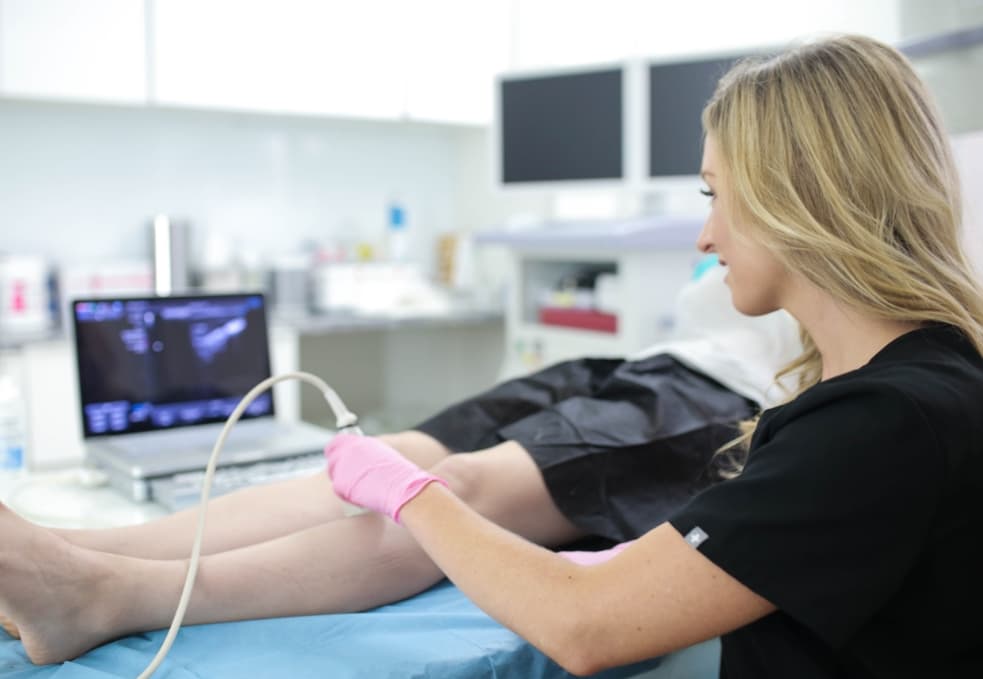Vein clinic in Oceanside Discusses Spider Vein Removal
Vein Treatment Clinic is one of the best vein clinics in Long Island, located less than 30 minutes from Oceanside via the southern state parkway highway. Our vein clinic is just about five minutes from the highway, next to the Bergen Point Golf Course. Vein Treatment Clinic is a state-of-the-art vein clinic in Oceanside, and we specialize in spider vein removal using minimally invasive procedures. As such, if you have spider veins, please consult our vein clinic in Oceanside today.
However, this article’s true purpose is to describe what happens during the spider vein removal process and if necessary. Our vein doctors have noted that most of our patients come with false assumptions about spider veins and spider vein removal methods. Most of our patients seem to believe that spider veins are completely harmless or that spider vein removal involves surgery. Both of those beliefs are false. In this article, we intend to give you a detailed overview of our spider veins removal process, so you know what you can expect from your treatment.

What are spider veins and are they dangerous?
Spider veins are visible as dense clusters of blood vessels on the surface of the skin. They look like spider webs or thin tree branches, always spanning outwards. Spider veins look hideous and lead to crippling social anxiety and self-consciousness. There’s a persistent myth that spider veins are a purely cosmetic issue, and that they don’t lead to any complications. That’s not entirely correct.
While spider veins aren’t dangerous in and of themselves, they’re often symptomatic of a deeper circulatory disorder known as chronic venous insufficiency. Spider veins occur when the vein valves in your blood vessels malfunction, which leads to venous reflux, i.e., blood flows backward in your blood vessels, accumulating in your leg veins. Over time, the continued accumulation of blood in leg veins leads to dilated blood vessels, leading to the formation of spider veins and varicose veins.
As such, even though spider veins aren’t dangerous, they may indicate a dangerous underlying condition. Venous insufficiency is a chronic circulatory disorder that only gets worse with time. Over time, if left untreated, vein disease may also lead to severe complications, such as varicose veins, profuse bleeding, skin disease, skin discoloration, leg ulcers, and deep vein thrombosis.
To put it simply, spider veins are dangerous, and you must consult a reputable vein clinic in Oceanside for effective spider vein removal.
How to determine if your spider veins are caused by vein disease?
Spider veins may or may not be caused by underlying venous insufficiency. The ideal spider vein removal procedure will depend on whether you have vein disease. If your spider veins are caused by underlying vein disease, the vein doctor will have to perform saphenous vein removal before treating your spider veins. If you don’t have vein disease, they can simply remove the spider veins on your skin.
But how do you determine if your spider veins are caused by venous insufficiency? Well, you should be vigilant of the symptoms of vein disease. The accumulation of blood in your leg veins often leads to symptoms besides spider veins. Some of the most common symptoms of vein disease include restless leg syndrome, frequent leg cramps, throbbing leg veins, and leg heaviness. Furthermore, these symptoms get worse at the end of the day or after long periods of sitting or standing still.
If you go to a reputable vein doctor, they will also run diagnostic tests to determine if you have vein disease. The vein doctor will use vascular imaging to visualize the blood flow in your leg veins. If you have venous reflux or accumulated blood in your leg veins, the vein doctor will identify venous insufficiency and curate the appropriate spider vein treatment plan.
How to treat vein disease permanently?
If your spider veins are caused by vein disease, the vein doctor will have to first collapse or remove the diseased saphenous vein. During the saphenous vein removal, the vein doctor will use thermal energy (radiofrequency ablation), laser energy (endovenous laser ablation), or medical adhesives (VenaSeal) to collapse or seal the diseased saphenous vein. After the saphenous vein removal, the accumulated blood will reroute to healthier veins, restoring smooth blood circulation to the heart. All minimally invasive vein treatments are non-surgical and carry a negligible risk of side effects or complications. You can resume most of your daily activities immediately after the vein removal procedure.
What is the best spider vein removal procedure?
After the vein treatment, the vein doctor will treat the superficial varicose veins and spider veins on your skin. Sclerotherapy is the best spider vein removal procedure because it’s minimally invasive and concludes within 30 minutes. During sclerotherapy, the vein doctor will inject sclerosant into the spider veins, fusing the vein walls and turning them into scar tissues. The scar tissues will eventually get absorbed by the body, thus fading away from your skin’s surface. However, you may need multiple sclerotherapy sessions to remove all the visible spider veins.
Consult your Vein Clinic in Oceanside
Vein Treatment Clinic is the best state-of-the-art vein clinic in Oceanside because we use the latest cutting-edge technologies for spider vein removal. Furthermore, our vein doctor carefully diagnoses the root cause of your spider veins before curating a treatment plan. For more information, please schedule an appointment with our vein clinic in Oceanside today.

